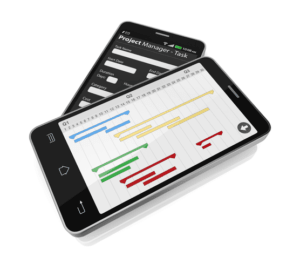ACH vs EFT vs Wire Transfer: Whats the Difference?

For everyday transactions, such as paying bills or transferring small amounts, EFTs are a convenient and cost-effective option. For larger, more urgent, or international transfers, wire transfers may be the better choice despite the higher fees. Both wires and EFT payments offer secure transfer systems, but EFTs have a slight edge in this area. While wire transfers go through fewer intermediaries, they represent a permanent transfer and cannot be reversed in the case that the receiving bank details are https://www.bookstime.com/articles/how-do-bookkeepers-get-clients wrong.
How do ACH transfers work?

By understanding the nuances of each option, you can ensure that your money moves in a way that best suits your financial goals. EFTs, let people purchase with debit/credit cards, withdraw from their ATM and send funds via bank wire. Bank wires are good options when you need to send money quickly, internationally and/or send a large sum. Wire payments are a method of electronic funds transfer that allows you balance sheet to send money directly and quickly from one bank account to another, domestically or internationally. ACH transfers are a type of EFT frequently used to process common electronic payments, including direct deposit, online bill pay, automatic loan payments and tax refunds.
- This level of efficiency reduces administrative overhead and enhances vendor relationships by ensuring that payments are made on time.
- EFT payments simplify this process by automatically generating digital records for each transaction.
- Electronic payments — also called EFTs — cover a broad range of payment types from ACH transfers to spending using your debit or credit card in a store.
- This makes EFTs ideal for routine payments like salaries, bills, and online purchases.
- Additionally, EFTs are secure, leveraging encryption and other security measures to protect your funds.
- In the next section, we’ll address some common EFT payment FAQs to further clarify any remaining questions you might have about this method of payment in Canada.
- HighRadius offers a comprehensive, cloud-based solution to automate and streamline the B2B payments process for businesses.
Key Features of EFTs
Once the transfer amount has been deducted from the originating account, the sender will be charged a fee for the wire transfer. A fee may also be deducted from the transfer amount by the receiving bank once the wire arrives. Join the thousands of businesses across the U.S. that trust Nadapayments for their transaction processing.

Speed to Value

Double-check that you use the correct number before you submit the transfer request. However, a domestic wire transfer could be more convenient if you want to send a large sum of money quickly because Interac e-transfers have daily, weekly and monthly transfer limits. Wire transfers make more sense when sending funds internationally, especially if you want to send a large amount of money. The differences are subtle, but while wire transfers are a form of EFT, EFTs are not eft vs wire wire transfers. These are just a few of the many EFT use cases for businesses in Canada.
Wire transfer vs electronic payment: what’s the difference?

If you need to move money quickly, especially internationally, a wire transfer is your best bet. To learn more about making ACH payments, accepting ACH transfers as a payment method from customers, and the benefits of ACH payments for businesses, read our ACH payments 101 guide. We’ll cover the differences between ACH transfers, wire transfers, and EFTs; how they’re used; and what you need to know about them for your business. In summary, EFT offers convenience, flexibility, cost-effectiveness, and security, making it a popular choice for various electronic fund transfers. A business owner looking to pay their vendors and employees will have different priorities to someone who is looking to provide urgent financial support to a family member or friend overseas.
- They’re also suitable for one-off payments and secure cross-border payments.
- Using EFT in Canada for credit transfers can significantly reduce the need for manual paper-based methods like cheques.
- The process involves the sender initiating a transaction, which is then batched and processed by an ACH operator who forwards it to the recipient’s bank for completion.
- This process can take anywhere from a few hours to a couple of days, depending on the banks’ processing times and whether the transfer is domestic or international.
- Businesses should assess factors such as transaction speed, cost, and security when choosing between these B2B payment methods.
- Two common methods are wire payments and Electronic Funds Transfer (EFT).
- In contrast, electronic transfers include various methods like ACH and EFT, which are typically used for routine domestic transactions.
- Fidelity doesn’t charge a fee for sending or receiving EFTs, but the receiving bank may charge a fee.
- In the digital age, transferring money has never been easier, with bank wire transfers and EFTs providing two reliable methods.
- Yes, both wire transfers and EFT payments offer secure transfer systems.
- What they all have in common is that they begin with the payer applying for and authorizing the payment.
For debit card transactions, enjoy a low rate of 1.5% + $0.25 per transaction. Whether in person, online, or on the go, our Wi-Fi EMV Quick Chip machine and mobile-friendly solutions make transactions easy and efficient. Wire transfers involve a direct bank-to-bank transaction that allows money to move electronically from one account to another. EFT is a broad term that describes a variety of electronic payment methods. While ACH transfers are usually free but take a couple of days to process, wire transfers are generally quick but may cost a high fee.

 العربية
العربية English
English